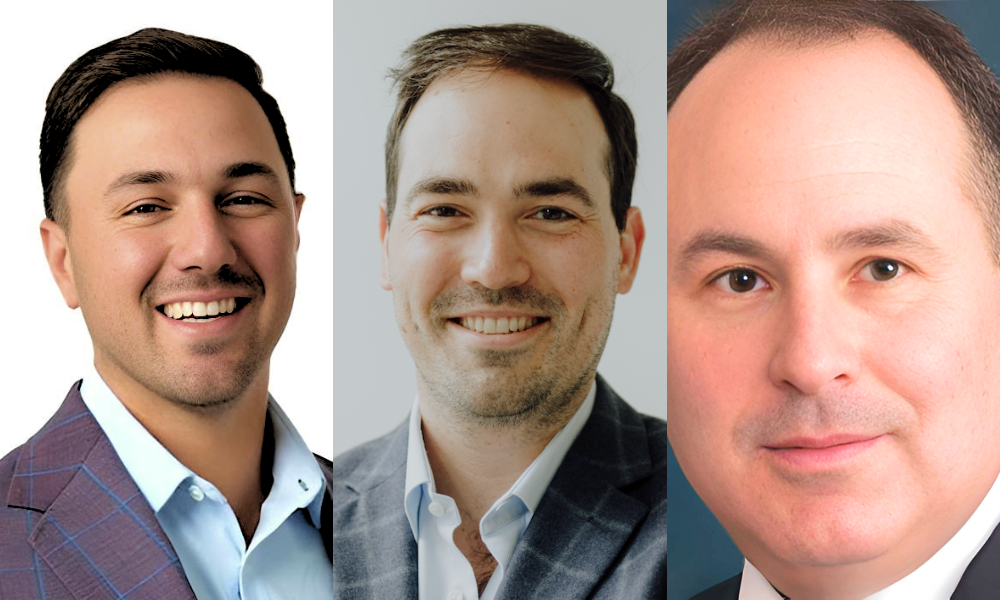

A troy ounce of gold for April delivery hit a record high of more than $2,859 this week thanks to a weaker dollar and sticky inflation concerns.
Or perhaps it was due to geopolitical and tariff worries.
Indian weddings maybe?
Forget it. When it comes to gold, it's never easy to pinpoint what's moving it. What is important, however, is that gold is glittering again and financial advisors are already answering client calls about it.
Gold is up over 7 percent year-to-date, more than doubles the 3 percent rise in the S&P 500 so far in 2025. The yellow metal’s strong start follows last year’s shining performance which saw it return over 26 percent compared to the S&P 500’s 23 percent.
Samuel Diarbakerly, founder and private wealth advisor at Generation Capital Advisors, views gold as a pure play on inflation that relies on supply and demand to set the price. Based on this belief, he would rather fight inflation by holding equities than gold due to their ability to pass through costs to consumers, innovate, grow their businesses, and ultimately give investors the chance to keep up with or outpace inflation.
“When we do have investors who want gold in their portfolio, we believe a physically backed ETF is a great tool to give exposure while maintaining liquidity. This is far more practical than hiding gold bars under the mattress,” Diarbakerly said.
As for diversifying into other precious metals like silver, up a shiny 6.3 percent year-to-date, Diarbakerly believes its better to stay on the yellow brick road instead.
“Due to the high correlation between many precious metals, if a client portfolio calls for precious metals our preference is to remain pure play in gold rather than speculate on which other precious metal may out or underperform gold. This will provide a more predictable return profile,” Diarbakerly said.
With tensions growing around the world and discussions surrounding tariffs on the rise, it’s not a surprise that gold has gained traction among clients, according to Colin Walker, co-founder & financial Advisor at CoFi Advisors. Nevertheless, Walker points out they “have not been a great diversifier from the market” as of late and is not a major proponent of the yellow metal.
That said, he does hold “small allocations in several of our portfolios to precious metals,” favoring ETFs because of their liquidity.
Finally, David Weinerman, founder and managing director at The Weinerman Group, adds central bank-buying to the list of reasons behind gold’s recent luster. The gold bull prefers holding the SPDR Gold Trust ETF (Ticker: GLD) for his exposure rather than physical bars or bullion. He's also not a fan of mining stocks which can be influenced by earnings reports, production costs, and industry-specific risks.
Weinerman said not recommending any other precious metals at this point, calling gold the historical “go-to store of value" during economic uncertainty, currency devaluation, and geopolitical risks.
“While silver, platinum, and palladium also have value, they are more influenced by industrial demand, making them more volatile. Unlike silver, platinum, or palladium, central banks around the world actively accumulate gold as a reserve asset, driving long-term demand and price stability,” Weinerman said.

A new proposal could end the ban on promoting client reviews in states like California and Connecticut, giving state-registered advisors a level playing field with their SEC-registered peers.

Morningstar research data show improved retirement trajectories for self-directors and allocators placed in managed accounts.

Some in the industry say that more UBS financial advisors this year will be heading for the exits.

The Wall Street giant has blasted data middlemen as digital freeloaders, but tech firms and consumer advocates are pushing back.

Research reveals a 4% year-on-year increase in expenses that one in five Americans, including one-quarter of Gen Xers, say they have not planned for.
Orion's Tom Wilson on delivering coordinated, high-touch service in a world where returns alone no longer set you apart.
Barely a decade old, registered index-linked annuities have quickly surged in popularity, thanks to their unique blend of protection and growth potential—an appealing option for investors looking to chart a steadier course through today's choppy market waters, says Myles Lambert, Brighthouse Financial.
